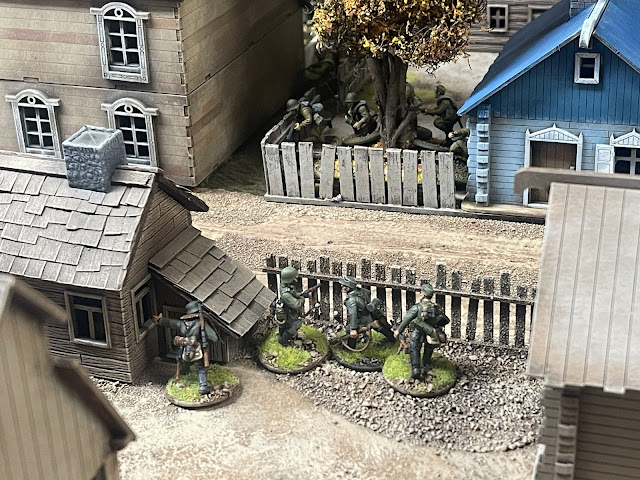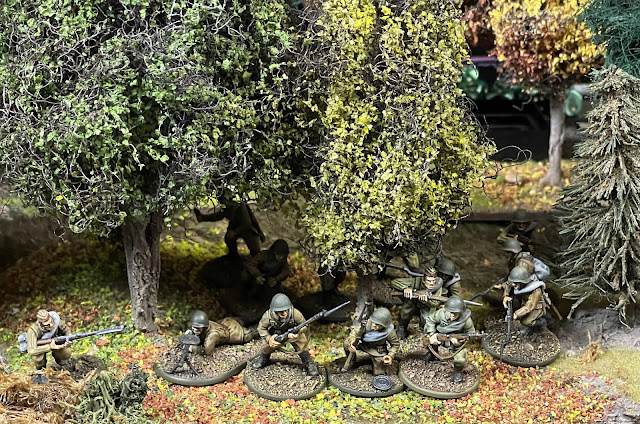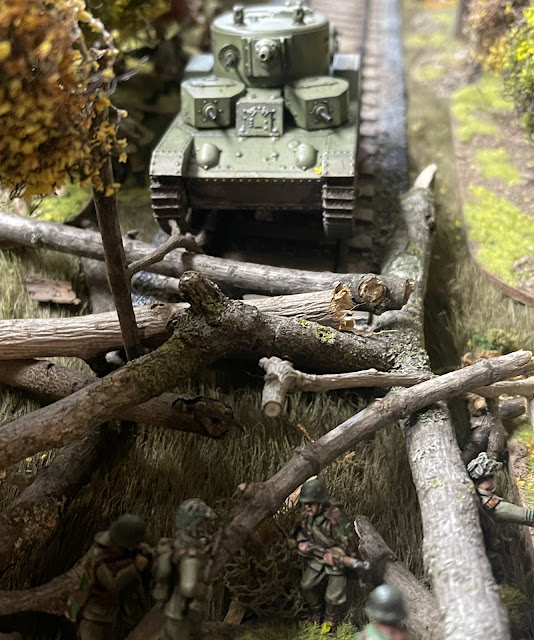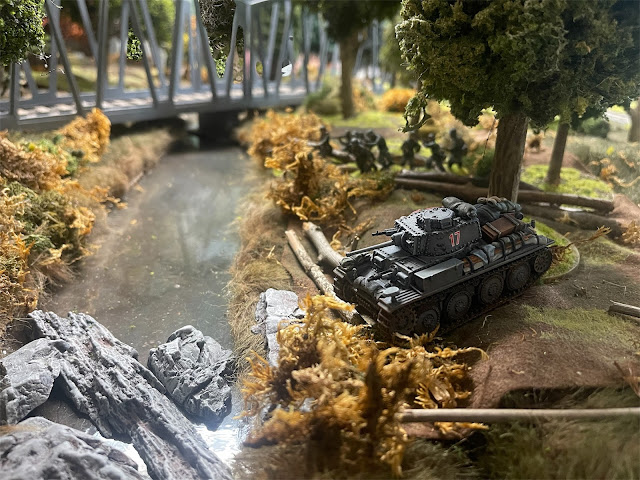Operation Barbarossa would fail. Its failure would have devastating results for the German war effort and would allow the Soviet Union to gain its footing. That was in the future. In Autumn 1941 the fight for the Southern front was still in the balance. The Germans continued to push the Soviets back and cause heavy casualties and destruction of many Soviet tanks and other valuable equipment. Kiev had fallen and Kirponos was dead. The Soviets knew they had help arriving in troops from the east, and just as importantly from Russia’s mud and winter. If they could slow the Axis advance, they could stop the German wave.
So it was that each village would become a place of contention. Holding out to slow down the German and Hungarian armies would buy time.
The last of five fights of the (real world) three month Barbarossa campaign would be a climactic fight over a small Soviet village somewhere near Kiev.
NotesThe last fight would be for possession of a Soviet village. Each side would have three Patrol Markers. These would maneuver until “locked” and exchanged for Jump Off Points (JOP) per Chain of Command rules.
Once the JOPs were placed, a line would be drawn connecting the JOPs to designate which buildings each side would control at the start of the fight. (See below for how it turned out.)
Any buildings that fell behind the front line of the respective armies’ line was controlled by that army, with the additional caveat that in situations in which there is a fenced in “yard” all buildings in that yard count as being controlled by the side whose line crosses the yard. Due to an uneven distribution of buildings, the church, large Railroad building and blue house count as two buildings each.
When the battle started the Axis forces controlled all but the blue building on their side of the road for 15 points while the Soviets controlled all but the yard on their far left for 14 points.
The conditions for control and ultimate victory were as follows:
1. A yard or yardless building is controlled by the side that last gained control whether they have models present or not.
2. For control to change, the enemy must have at least one model in the yard while no models from the previous controlling force has any models in the yard. This also applies to yardless buildings. It is not enough to take a building in a yard to gain control, but the controlling force must be driven out of all buildings in the yard for control to change.
3. Every time control changes, the value of the yard or yardless building is added to an ongoing count. When this count reaches 50, the scenario ends and whoever holds more points worth of buildings at that time wins. A single yard or yardless building could change hands several times. Each time, the value is added to the ongoing count.
The Fight is On.
The early maneuvering in the battle for the small village was cautious as the two sides moved up to the road to gain possession of those few building that didn’t fall within friendly lines. The exception was a sortie by a Soviet rifle squad that crossed the road and hurdled a rickety fence to take a muddy farm on the Soviet far right.
Axis forces were not present in the yard, so this was an immediate change in control. First blood!
Soviets:19. Axis 15 Ongoing Count 2
The Soviets didn’t stay long. The spindly fence provided little cover and a Nimrod Self Propelled Gun arrived and promptly sent the Soviets scampering back across the road, dragging a wounded Serzhant with them.
Axis forces were not yet able to re-enter the farmyard so the Soviets retained control for now.
All along the road bisecting the town, small arms fire erupted as squads of infantry ducked behind fences and smashed the glass out of building windows to take up the fight.
The distances were short and the fire was intense Reinforcements picked their way through narrow spaces between fences and buildings to bring up ammo and fresh bodies.
Two Panzer II tanks rolled up behind the Axis line to give support at the same time a T26 and Ba10 did the same for the Soviets.
The Soviets were taking advantage of a thickly walled Party building across the road from the muddy farm where they set up a Maxim machine gun. The gun blasted away at some Hungarians on the ground floor of the large Railroad building.
All along the front the two sides were engaged.
Near the muddy farm, the BA-10 avenged the wounded infantry squad leader by firing its 45mm gun at the Nimrod. A shell pierced the front of the thin skinned Hungarian SPAA and killed the driver. A nearby Panzer IIB retaliated and forced the BA-10 to reverse undamaged but shaken.
Near the churchyard, a new threat entered the villlage. A Panzer 4F rolled up a narrow side street to add its fire. It had an immediate effect. An HE shell from its main gun struck home (literally someone’s home) and hit with so much force that the building it targeted caught fire and faced collapse. (In COC a roll of three sixes to hit with an HE shell starts to bring down a building. Four sixes and it immediately collapses.). The Soviet infantry inside, already battered by small anrms and Autocannon fire, were now in a bad way.
The opening phase of the fight was ending and the battle was intensifying.
Soviets 19. Axis 15. Ongoing Count 2



































